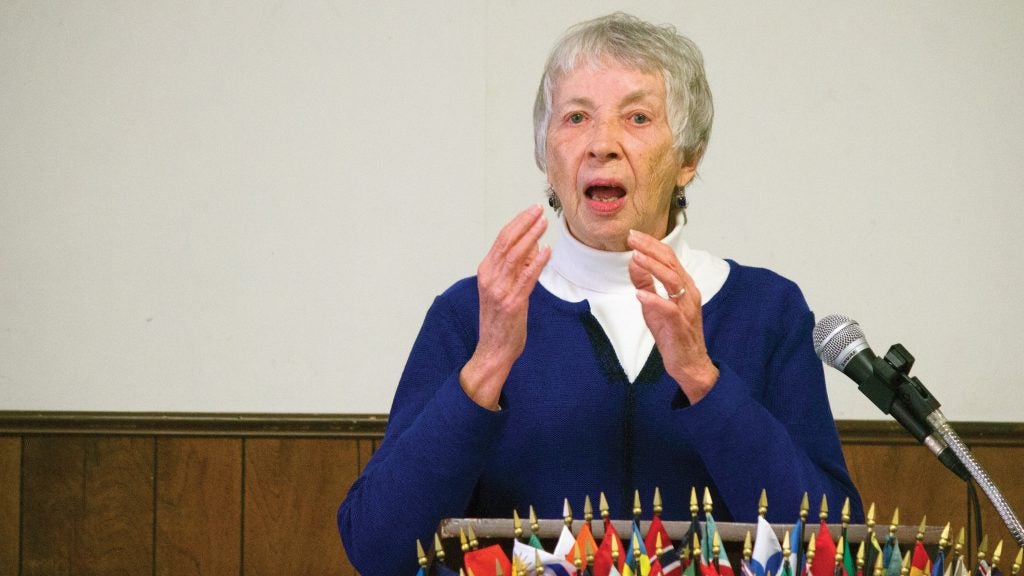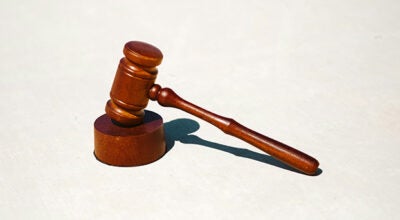Area woman gives history of female suffrage movement
Published 8:00 am Friday, November 17, 2017

- (Leader photo/TED YOAKUM)
DOWAGIAC — While the 19th Amendment may have been ratified less than a century ago, women’s fight for the right to vote began shortly after the ink dried on the U.S. Constitution.
From the Seneca Falls Convention for women’s rights of 1848, to Sojourner Truth’s famed “Ain’t I a Woman?” speech delivered in 1851, the road to universal suffrage in the United States was long, with pitfalls aplenty.
Marilyn Klawiter, president of the League of Women Voters of Berrien and Cass County, stopped by Thursday’s meeting of the Dowagiac Rotary Club to highlight the history of women and voting in America. Klawiter was invited to speak by Rotarian Barbara Groner, who asked her to come after reading the league’s October newsletter, which gave a brief history of the road to the 19th Amendment, which will turn 100 years old in 2020.
Several milestones in the fight for women’s suffrage will turn 100 over the next three years, though, including: the passage of a bill in Michigan in 1917 to give women the right to vote; a vote by state voters in 1918 to approve the bill; and the passage of the 19th Amendment in the U.S. Senate in 1919, which was ratified by the Michigan Legislature later in the year — the following year, the amendment had been approved by enough states to become part of the Constitution.
However, the fight for suffrage began long before the 20th Century, Klawiter said.
As the U.S. Constitution, when enacted in 1789, did not specify criteria on who had the ability to vote in elections, that responsibility fell to the state governments. Leaders decided that only white men who owned property could participate in elections.
“Some historians estimate that only half of the white males in the country could vote, because only half of them had any property,” Klawiter said.
Following the birth of the country, two social movements sprang forth and gained steam over the years: one to grant women the right to vote, and the other to end slavery and give nonwhite people the right to vote as well. The Women’s Rights Movement had secured several victories during the 19th Century, including the organization of the first women’s rights convention in Seneca Falls, New York, in 1848.
The two causes worked hand-in-hand initially, although eventually the abolishment movement gained more influence than its counter, especially during the American Civil War.
“It was pause — it was not the end of the effort,” Klawiter said.
In 1866, a year after the end of the Civil War, social reformers Susan B. Anthony and Elizabeth Cady Stanton formed the American Equal Rights Association, which advocated for universal suffrage. Although the group won a major victory when African-American men won the right to vote following the passage of the 15th Amendment in 1870, advocates for women’s suffrage eventually split into two camps: one that pushed for a constitutional amendment to solve the problem, and another that wanted to get state legislatures to grant suffrage.
At the turn of the 20th Century, the latter had made small progress to their goal, with four states — Wyoming, Utah, Colorado and Idaho — granting women the vote. However, the outbreak of World War I changed everything, as, with men overseas fighting in Europe, women were tasked with stepping up in society.
“The perception changed dramatically,” she said. “Women were seen as having a role in the public sphere, rather than just the domestic sphere.”
In 1918, a surge of states, including Michigan, voted to grant women suffrage. The momentum carried over to the federal level as well, as President Woodrow Wilson dropped his previous opposition to women’s suffrage and supported the 19th Amendment, which eventually cleared Congress in 1919.
Recognizing that victory was on the horizon, in 1920, just six months before the passage of the 19th Amendment, women’s suffrage leader Carrie Chapman Catt formed The League of Women Voters, an organization designed to help women flex their soon-to-be-granted civic muscles.
“Rather than let this energy decline, they said, ‘let’s redirect into something else,’” Klawiter said. “’Let’s make sure that we do everything we can to women movers and shakers, and to increase access to the ballot box for all men and all women, and make sure that the democratic process actually works.’ That’s why we’re here today.”






